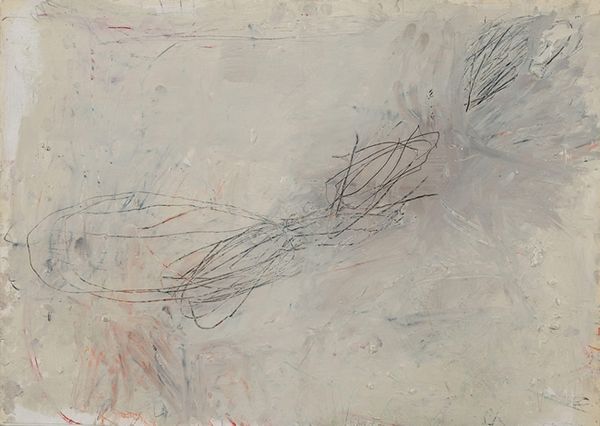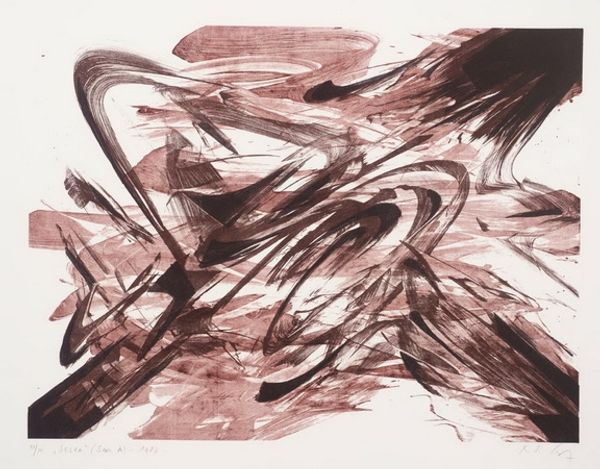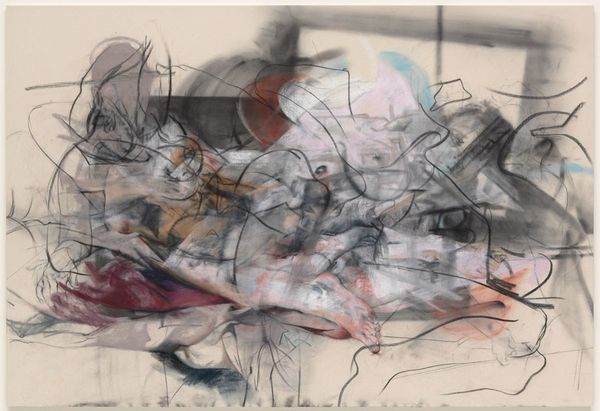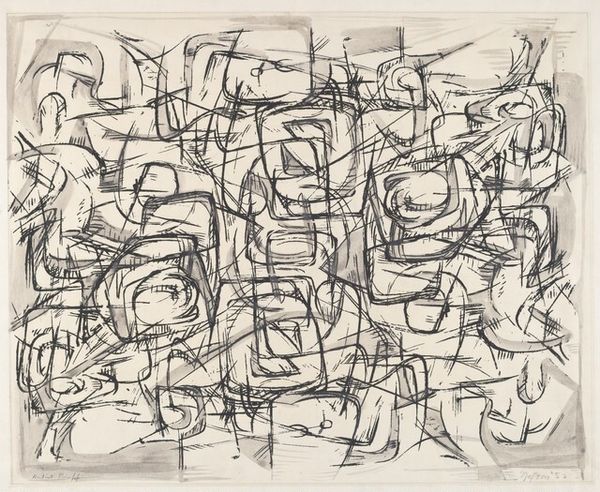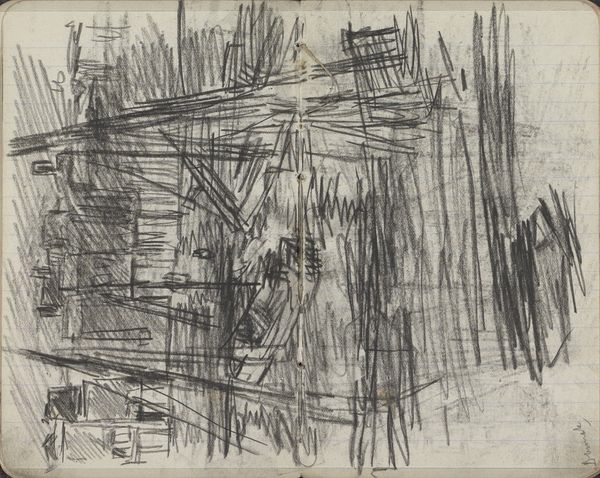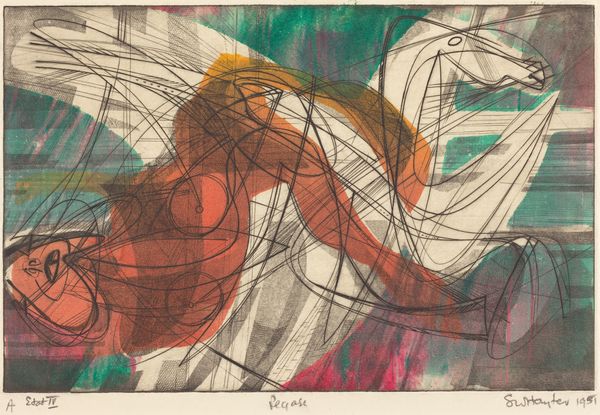
drawing, pastel
#
portrait
#
drawing
#
figuration
#
neo-expressionism
#
line
#
pastel
#
nude
Copyright: Jenny Saville,Fair Use
Editor: We’re looking at Jenny Saville’s “Ebb and Flow” from 2015, a pastel and charcoal drawing. There's a restless energy in how she layers the lines and colours to depict the nude figure. What social or art historical contexts can you see influencing this piece? Curator: It’s interesting you pick up on that restless energy. Saville has long been interested in challenging conventional representations of the body, particularly the female nude. Thinking about the institutional history of art, how many nudes in museums depict a very specific, often idealized, body type? Saville confronts that directly. Her work can be seen as a dialogue with artists like Rubens or Titian, who also painted the female form, but within a patriarchal system that objectified women. What’s different here? Editor: It feels more… raw. Less idealized, more focused on the actual physicality, maybe even vulnerability, of the figure. Curator: Precisely. The scale of her work, and her deliberate emphasis on flesh and weight, become a political statement. It’s claiming space – literal canvas space, but also social and cultural space – for a different kind of female body. Consider too, the time period. The re-emergence of figuration, of painting the body, after decades dominated by conceptual or abstract art - it was a deliberate move against the art establishment itself. Are you familiar with Neo-Expressionism and its challenge to the dominance of Minimalism? Editor: I am, but seeing it connected so directly to Saville’s portrayal of the body makes it click in a new way. Curator: And those loose lines, the layers upon layers, it speaks to the lived-in, experienced body, a body in constant flux, defying static representation. Editor: This makes me reconsider the visual language of vulnerability. Thanks! Curator: Indeed, and by challenging conventional representations, Saville encourages us to question the power structures embedded within art history itself. A worthwhile thought!
Comments
No comments
Be the first to comment and join the conversation on the ultimate creative platform.


